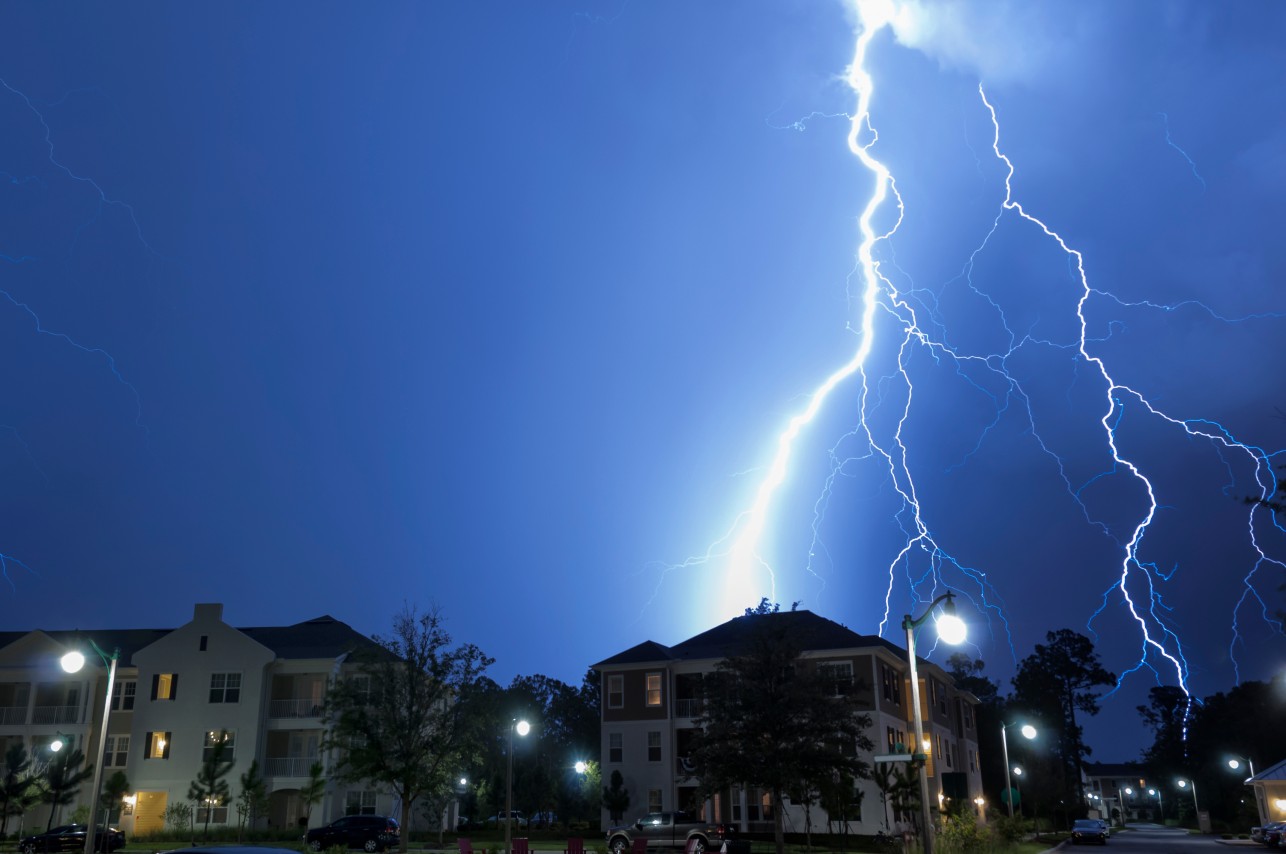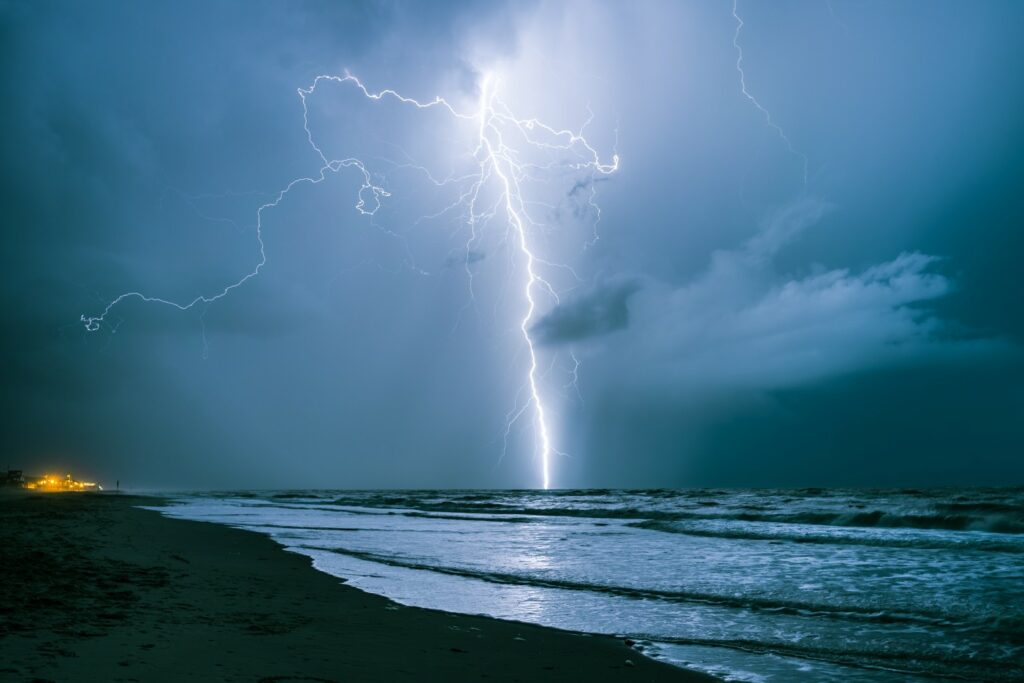
Heavy Rain, Flooding, and Chance of Severe Weather Staring Down the Southern U.S.
January 22, 2024
Posted: April 10, 2023 10:55 am





The year 2023 has been a big one for severe storms, and it’s important to understand how to stay safe from dangerous elements. One of those elements being lightning strikes. With summer quickly approaching, knowing how to protect yourself from lightning is essential.
Although 2023 hasn’t seen any deaths by lightning so far, deaths by lightning strikes was on the rise during the summer of 2022. The dangers of lightning strikes grow ever more deadly as the threat remains a constant worry in all parts of the United States. After 6 months without experiencing any lightning-related fatalities, a flurry of lightning-strike deaths occurred over 6 weeks during the summer of 2022.
Fortunately, lightning deaths remain far from national averages between 1991 and 2001 when the average death rate was 54 people per year. Since that time, deaths have steadily decreased to an average of 27 per year. That information supplies little comfort to families who have lost someone in an unexpected flash of electrical activity.
Although more common during the summer, lightning can occur anytime throughout the year. The phenomenon occurs when two electrically charged areas of the atmosphere interact and temporarily neutralize their electrical charges. This is accompanied by a fast electrical discharge between two clouds, within a cloud or between the ground and a cloud.
The average electrical output of a lightning strike measures about one gigajoule. That’s enough power to run a 60-watt light bulb for six months, wash 100 loads of laundry or make 1,000 pots of coffee. GJs can measure various kinds of power output that include that of natural gas, electricity, solar power and oil.
The first death that broke the 6-month record occurred on June 22, 2022 in Pico Rivera, California. The fatal electrical discharge struck a woman walking her dogs and killed all of them. Less than 2 weeks after the initial death, a man from Mountain City, Georgia was struck while loading tools in his van
The first lightning-related death of 2022 occurred on June 22 in Pico Rivera, California, when a 52-year-old woman was walking her dogs on a path and lightning struck and killed her and the dogs. Less than two weeks later, another death occurred in Mountain City, Georgia, when a man was loading tools in his van at his residence and was struck by lightning.
During the Fourth of July celebrations, four deaths had already been recorded, which rose to eight by the end of the month. These deaths included the fatality of a 38-year-old piloting a drone in the middle of a field, the equivalent of flying a kite in a thunderstorm. A 27-year-old man was killed while doing some landscaping work in Florida.
Just being outside during a thunderstorm might prove treacherous. Victims included people desperately seeking shelter from a storm. On August 2, 2022, one 22-year-old was struck and killed in his tent while camping.
One lightning strike killed three people outside the White House and injured a fourth. The victims included a couple in their 70s who were celebrating a wedding anniversary. This particular strike really brought home the dangers of lightning, which can reach anyone at any time. Even the Secret Service can’t protect the president from a lightning strike.
The total of 13 fatalities in the summer of 2022 included people from all areas of the country, all ages and all lifestyles. Drawing attention to the dangers of lightning warn people to behave safely during lightning storms despite the minuscule odds of being struck. There are more than 25 million lightning strikes each year in the United States, and 3,000 strike people in some way.
Many of those who don’t die suffer severe injuries, lifelong health disabilities, chronic pain and mental damage. Lightning can compromise the body’s own central nervous system, which carries electrical impulses to the brain and nerves.

The dangers of lightning depend on different variables that include where you’re struck, the type of object you might be holding and the amount of water on your skin, which conducts the electricity. The overwhelming amount of electricity seldom runs entirely through a person. Think of it like trying to pour a gallon of water through a straw.
Lightning can certainly kill multiple people at once as was the case at Lafayette Park in Washington, D.C. That had the distinction of being the first multiple-death lightning strike since August of 2020. It was also the first time that three people were killed simultaneously in 18 years. On June 27, 2004, three people were killed under the trees in Bedford Dam State Park ,in Georgia.
The strike killed a retired couple and a 29-year-old banker from Wisconsin and California respectively. On the same day, a contractor in Nottingham, Maryland, was also killed. Lightning recognizes no borders except indoors and outdoors to a limited extent.
If lightning does strike someone, call 9-1-1 immediately. You can render first aid or CPR if the victim stops breathing. Don’t fear touching the victim because the charge will be dissipated. Move the victim to a safer location because lightning can strike twice in the same place.
The risk of being a lightning strike victim is about 1 chance in 15,300 during your lifetime of 80 years. The risks are minuscule, but the sudden devastating discharge of electrical power can be terrifying. That’s why people should try to stay safe, take proper precautions and avoid thunderstorms as much as possible.
Lightning strikes are classified in mild, moderate and severe categories.
Mild strikes can feel like an excess of static electricity or an electrical shock. Mild strikes rarely cause any burns, but victims can lose consciousness or develop amnesia, numbness or paresthesia, an abnormal sense of tingling or prickling of the skin. Any burns sustained are generally superficial and easily treated.
Moderate lightning injuries can cause respiratory arrest, seizures and cardiac issues, which usually right themselves spontaneously as the heart resumes its normal rhythms. You can apply first aid or CPR, which is often needed because the temporary cardiac arrest often causes respiratory arrest. Victims of moderate strikes should always be hospitalized.
Superficial and moderate burns can also result from a moderate lightning strike. Patients might also develop symptoms of lifelong neurological disorders and chronic pain.
Severe strikes often result in burns and usually cause cardiac arrest that fails to resolve itself. The strike often requires reverse triage because the lightning may continue to pose a threat. Burns and neurological damage might require ongoing treatment, which causes a fourth category of lightning strikes — Ongoing Trauma.
Sustained strikes usually generate entrance and exit wounds, subsequent kidney failure and even multiple organ failure. Treatment of ongoing trauma can be protracted or lifelong.
Other results of lightning strikes include related problems like forest fires, home fires and other threats that include structural weakening of infrastructure and ecological disturbances. Scientists state categorically that climate change increases the severity or numbers of lightning strikes.
Hot, humid conditions make the perfect venue for lightning strikes. More heat draws moisture into the air and forces air into an updraft, which are two conditions under which electrical particles become charged. Each degree of centigrade temperature results in a 12% rise in the number of lightning strikes. Scientists predict that the strikes will increase by 50% by the end of the century.
Lightning produces most wildfires — except in California where human carelessness is mostly to blame. The ancillary damages run into multiple billions of dollars in damages and extreme loss of life.
Myths and misconceptions about lightning can prove as dangerous as the strikes themselves. Talking on a mobile phone or iPod won’t attract lightning, but using a corded phone might. These dev;ices can affect the electrical flow of a strike but won’t attract lightning.
Common myths and misconceptions about lightning include:
Getting wet can certainly increase the likelihood of being struck and the severity of the strike.
Knowing how to stay safe in thunderstorms consists of understanding how lightning works and knowing how to reduce the dangers. The prime safety recommendations are to cover yourself outside and stay indoors as much as possible.

January 21, 2024

January 19, 2024

January 18, 2024